Rules of the scavenger hunts: You may consult any source anywhere but please be sure to indicate where you got your information. And watch out for bad websites!
"A hypothesis or theory is clear, decisive, and positive, but it is believed by no one but the [person] who created it. Experimental findings, on the other hand, are messy, inexact things, which are believed by everyone except the [person] who did the work."
-- Harlow Shapley, "Through Rugged Ways to the Stars"
UAT18.06 Scavenger Hunt #2: Interpreting spectra
2.0 The galaxy hosting the HI signal Our observations are directed towards detecting the radio HI line signal from the target galaxies, and we also need to understand the stellar population associated with the HI gas. In both SH #0 and SH #1, we used links to the public databases of SDSS, SkyView/DSS and the NED. Here we'll provide you with links that you can use to explore some interesting galaxies. Here are links to the front pages of the SDSS, SkyView/DSS and the NED: If you are not already familiar with these really useful websites, we suggest that you should become more familiar with them tonight, tomorrow or after you return from the workshop. Here, we'll hope that someone in your group knows enough to use them to answer the questions below about some of interesting galaxies.
- Obj #1: The galaxy UGC 615 at RA,Dec = 14.9171 15.3308
DR9Navi DR14Navi SkyView.03 SkyView.10 DSS2red.03 DSS2blu.03 DSS2red.10 DSS2blu.10 NED1 - Obj #2: The galaxy AGC 102145 at RA,Dec = 12.2654 15.4856
DR9Navi DR14Navi SkyView.03 SkyView.10 DSS2red.03 DSS2blu.03 DSS2red.10 DSS2blu.10 NED1 - Obj #3: The galaxy AGC 122941 at RA,Dec = 37.142083 25.331111
DR9Navi DR14Navi SkyView.03 SkyView.10 DSS2red.03 DSS2blu.03 DSS2red.10 DSS2blu.10 NED1
a. This object has lots of cross-identifications. What do "UGC", "CGCG", "MCG" and "2MASS" refer to? b. What is the recessional velocity given by the SDSS spectrum? c. ALFALFA measures a heliocentric velocity of the HI from this galaxy of 5495 km/s. Comment on the comparison with the SDSS value. d. What spectral classification (as given on the image of the spectrum) is assigned to this galaxy by the SDSS? What is the classification based on?
Consider Object #2:
e. How does this object compare with Object #1 as a target for SDSS spectroscopy? f. What spectral classification (as given on the image of the spectrum) is assigned to this galaxy by the SDSS? What is the classification based on? g. How does the SDSS spectrum of this object compare with that of Object #1 h. The ALFALFA database lists this as a "Code 2" signal with a recessional velocity from the HI spectrum of 5483 and a signal-to-noise ratio of 4.9. What is a "Code 2" ALFALFA source?
Consider Object #3:
i. What is the best SDSS name to identify with our LBW target (Obj #3)? Why isn't this a trivial question? j. This galaxy is not an SDSS spectroscopic target. Is that a surprise? k. Is a redshift available from NED for this object? l. The ALFALFA database lists this as a "Code 4" signal with a recessional velocity from the HI spectrum of 5862 and a signal-to-noise ratio of 5.8. What is a "Code 4" ALFALFA signal?
2.1 Identifying signals in L-band wide spectra The APPS survey includes observations with the Arecibo telescope to detect HI line emission from galaxies which, based on their optical properties in the Sloan Digital Sky Survey (SDSS) and Galaxy Explorer (GALEX) databases, are likely members of the supercluster or its immediate foreground/background. We'll talk about how we select targets for the HI observations later. For now, let us focus on how we conduct the Arecibo observations using the L-band wide receiver system. Below are several examples of spectra obtained in the Fall 2015 observing run conducted under the APPSS Arecibo observing program A2982. Click on the spectrum to display a larger version in a new tab.
|
To the right are the four WAPP spectra obtained from the position switched observations of
the galaxy AGC 310858 displayed with the
horizontal axis in frequency units (top) and then velocity units (bottom). Here, the
ON and OFF-source spectra have been differenced and normalized and the calibration derived
from the CAL-ON/OFF sequence has been applied. In the frequency units plots,
there are interesting positive flux density signals (which we designate by letter)
at 1422.3 MHz (A), 1420.4 MHz (B), 1404 MHz (C),
1381 MHz (D); the 4th spectrum covering the lowest frequency range appears quite different.
Let's try to figure out what these spectra show. a. Identify each of the features A, B, C and D in the spectra shown in velocity units. Click here to see a larger version of the first WAPP spectrum, centered at 1415 MHz. b. How can you explain Feature A? c. What is feature B associated with and why does it appear to be show both positive and negative flux density? Click here to see a larger version of the third WAPP spectrum, centered at 1375 MHz. d. Feature D arises from well-known radio frequency interference (RFI). Check out Phil Perillat's list of RFI frequently seen at Arecibo and our own ALFALFA team RFI page. What is Feature D? e. Why isn't the transmitter responsible for the RFI at 1381 MHz on all the time? Hint: See our ALFALFA team RFI page. |
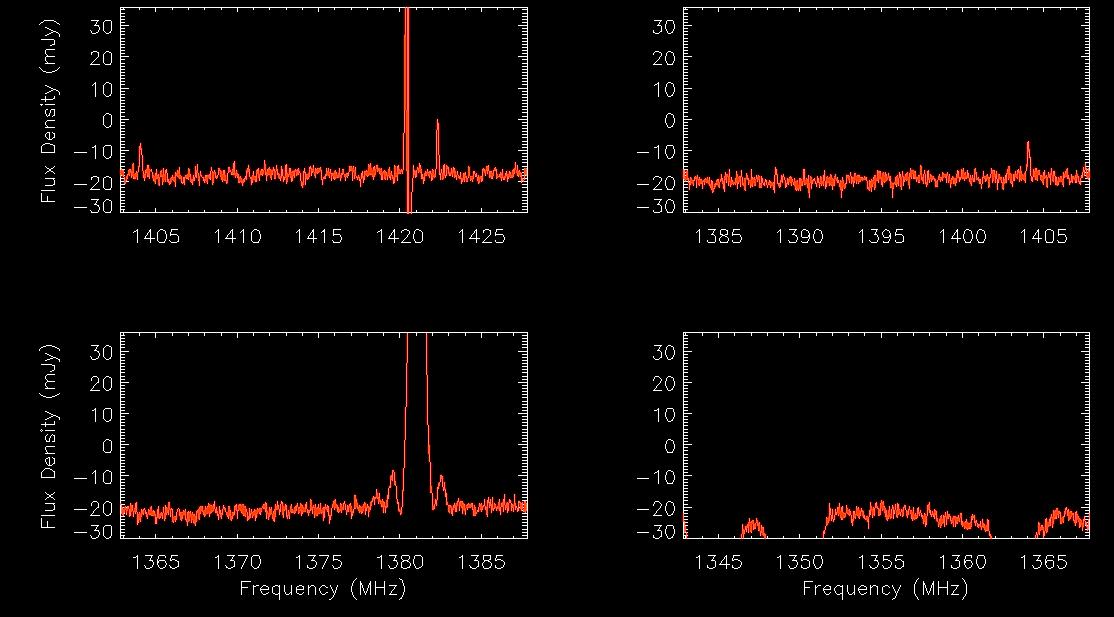

|
|
Because the RFI transmitter isn't on all the time, we can discard that portion of the
dataset when it is on to produce an RFI-free difference spectrum; because it contains fewer data records,
it will be noiser that one that contained a full 5 min-ON and 5 min-OFF source but it's better than the one contaminated
with the RFI or having no spectrum at all.
The spectrum to the right shows the result of forming the final spectrum after excising the
records with the RFI present.
f.
Was the transmitter associated with the 1381 MHz RFI on during the ON-source
or the OFF-source portion of the position-switched observations of AGC 310858? Click here to see a larger version of the fourth WAPP spectrum, centered at 1355 MHz. g. What RFI makes the fourth spectrum useless to us? |
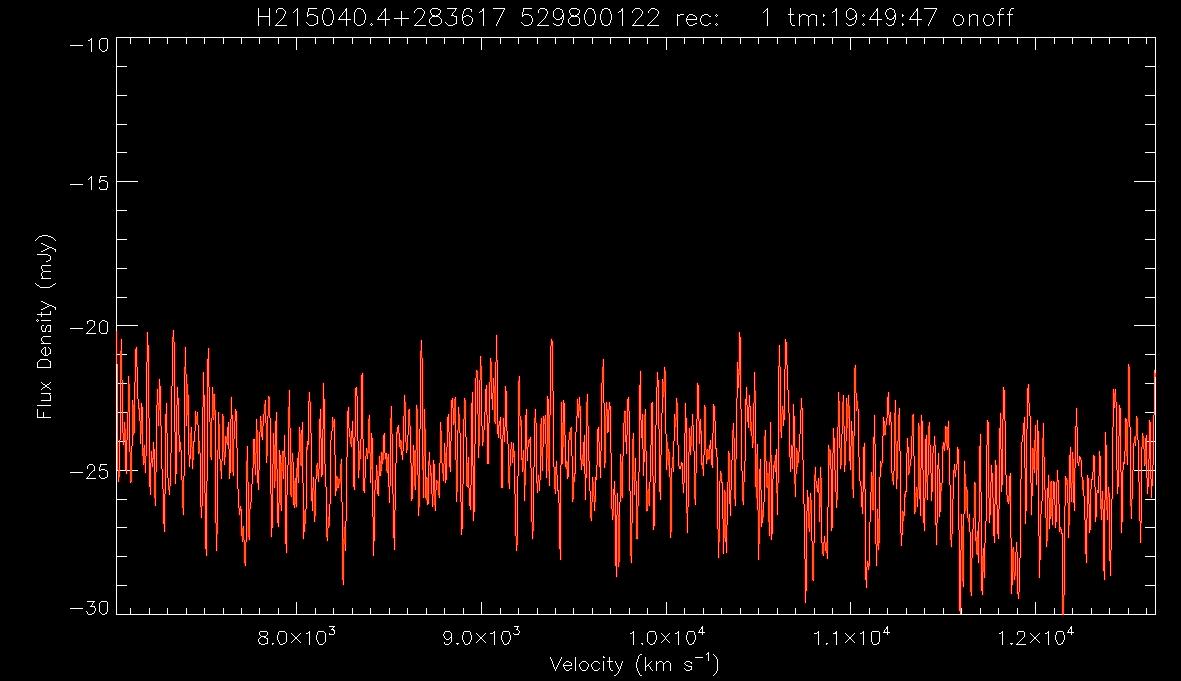
|
h. We (finally!) identify Feature C with the target galaxy AGC 310858. Why does it appear in more than one spectrum?
Here are links to various useful public databases: SDSS DR 9, SDSS DR 12, DSS2 Blue, and NED. Be sure you understand what each site contains and how to use/interpret the information/images posted there. AGC 310858 2150403+283527 327.6679 28.5908 DR9Navi DR12Navi DSS2blu.03 NED1.0 i. What do you conclude about the nature, distance, morphology, stellar and gas content of AGC 310858?
2.2 Interpreting LBW spectra taken in APPSS search mode Use what you have learned above to interpret spectra of targets observed under Arecibo program A2982 in the fall of 2015 under the UAT APPSS program. Below are some of the spectra of AGC 335430, an APPSS target, as well as links to the optical databases as above. In all cases of the images, a larger version will open in a new window if you click on the spectrum
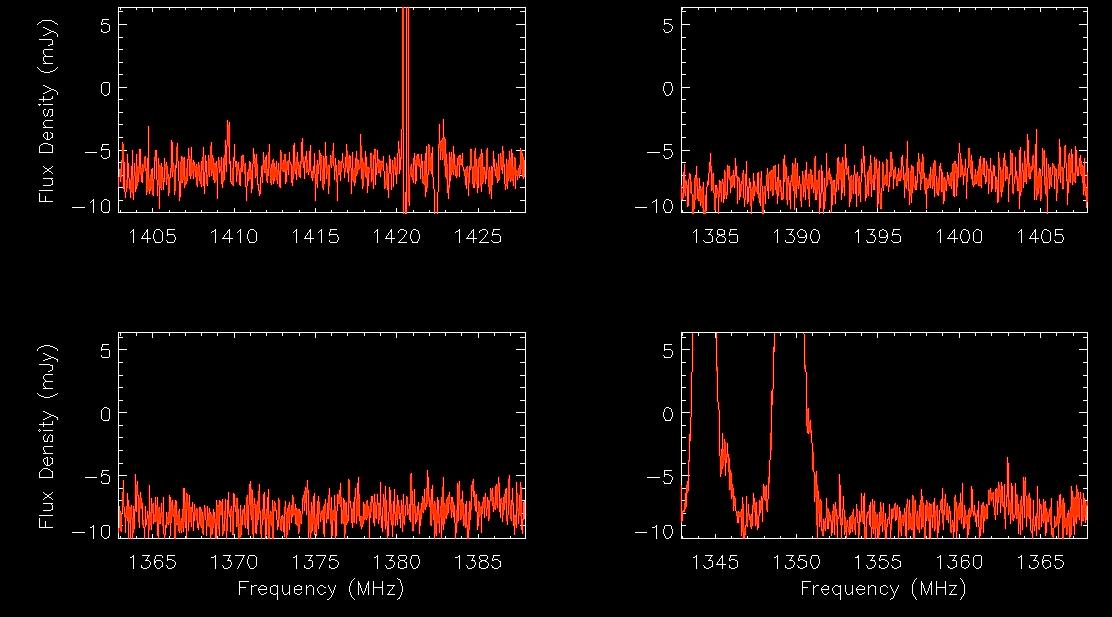 |
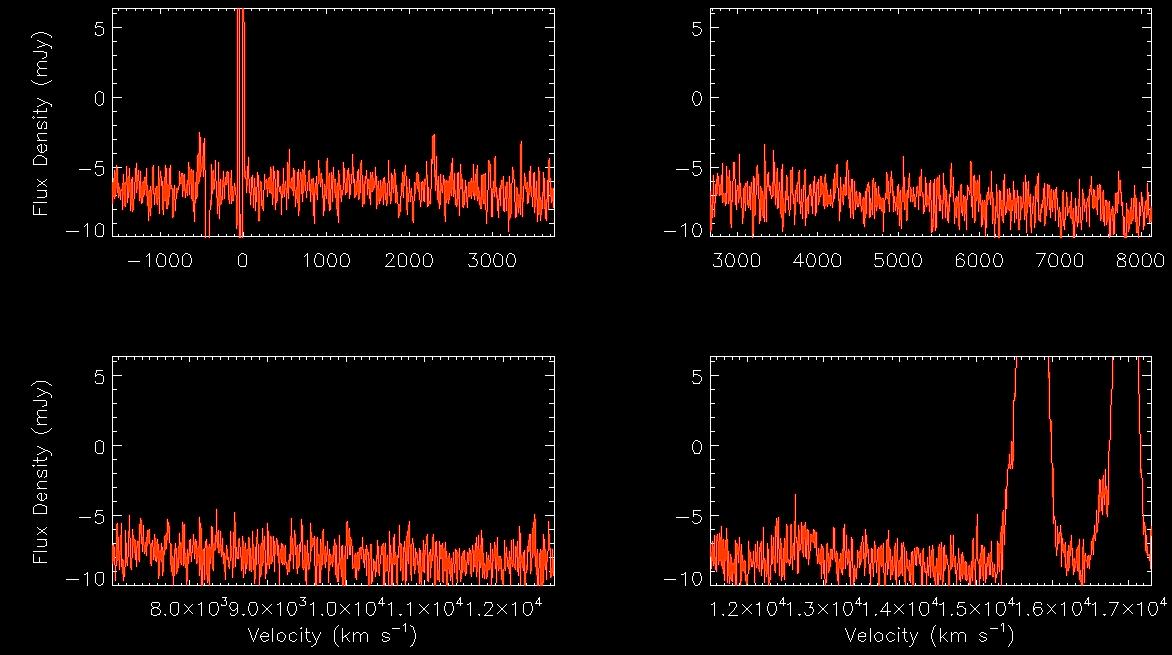 |
 |
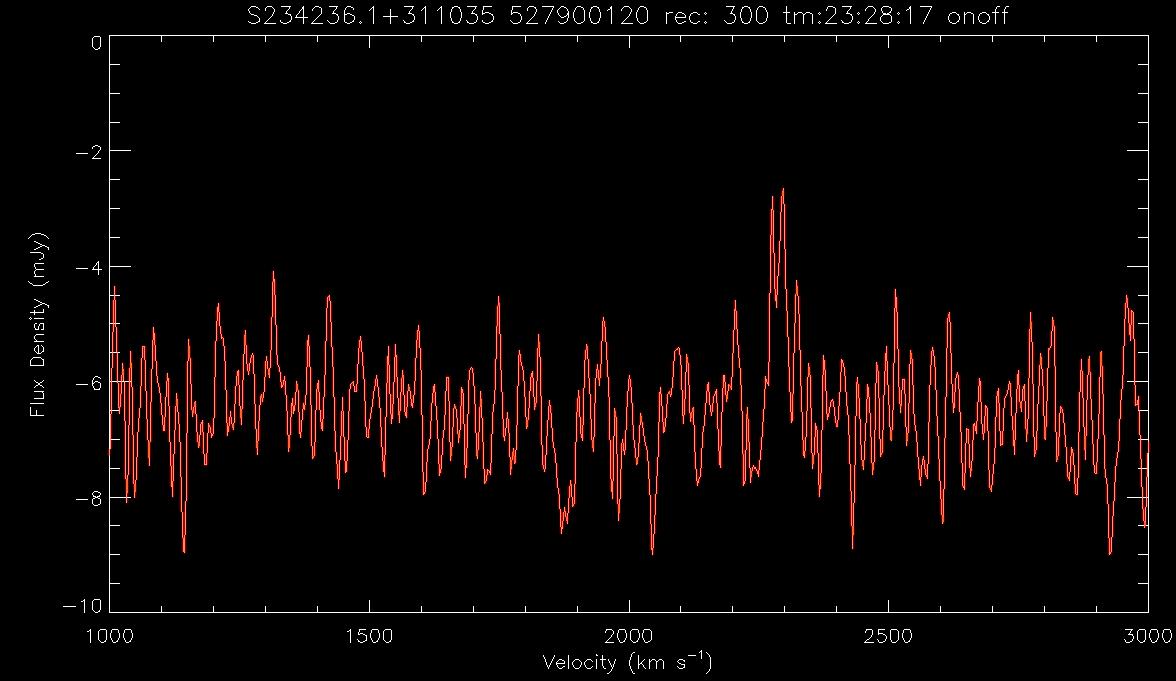 |
Keep in mind that stronger HI sources would have been detected in the ALFALFA survey, so most of the LBW targets should have relatively low integrated HI fluxes.
2.3 Interesting LBW targets! In this part, you should investigate some interesting LBW spectra observed in the our various LBW observing runs in the last couple of years. Each team is assigned two objects to investigate. Your job is to use whatever methods/links you can to interpret the LBW spectrum and determine the nature of the extragalactic source detected by LBW. What can you tell us about the objects assigned to your team? At the end of the day, each team will present its results (in 3 minutes or less total.... so SUMMARIZE!) Note: Clicking on the link to each spectrum will open it in a new tab. The teams and assignments have been shuffled from previous years to stimulate faculty anxiety.
| Team | AGC number | LBW Spectrum | Links | Notable information/conclusions/oddities/questions |
|---|---|---|---|---|
| A | 223819 | 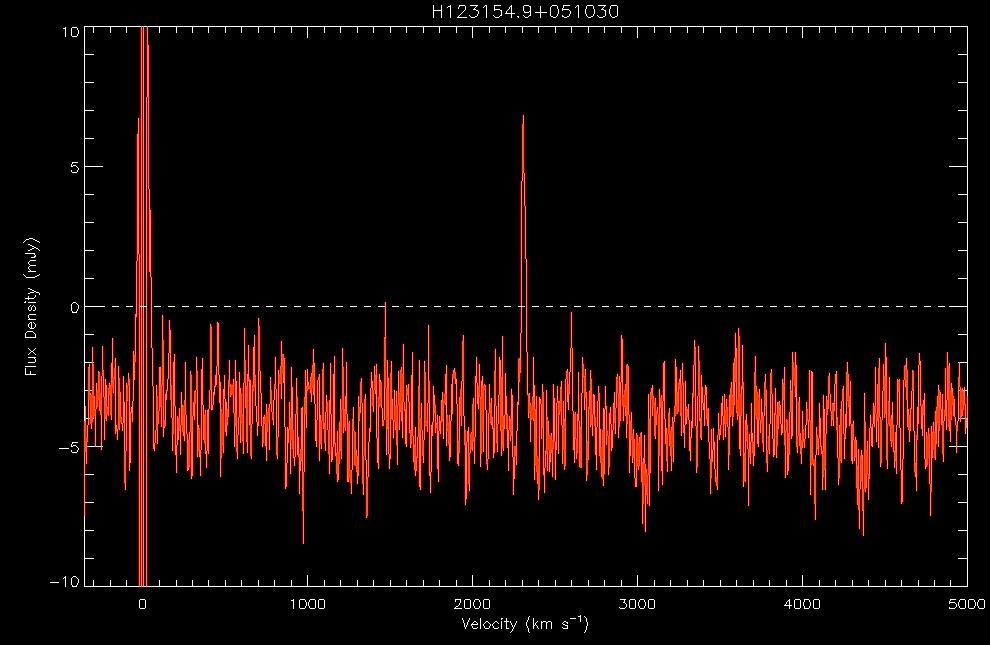 |
DR9Navi
DR14Navi DSS2blu.03 NED1.0 | |
| 180545 | 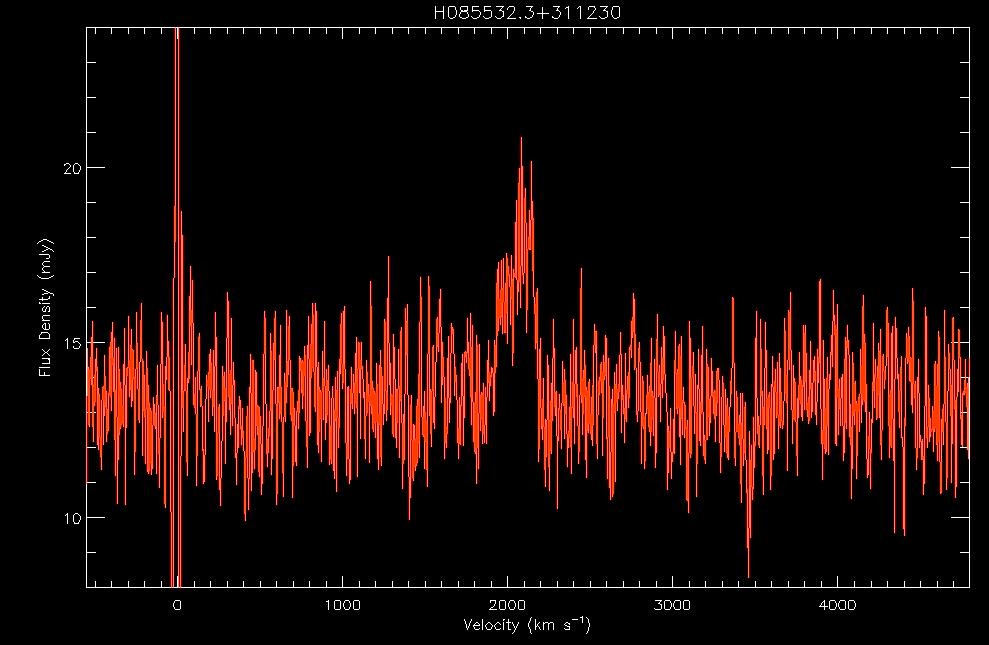 |
DR9Navi
DR14Navi DSS2blu.03 NED1.0 | | |
| B | 182595 | 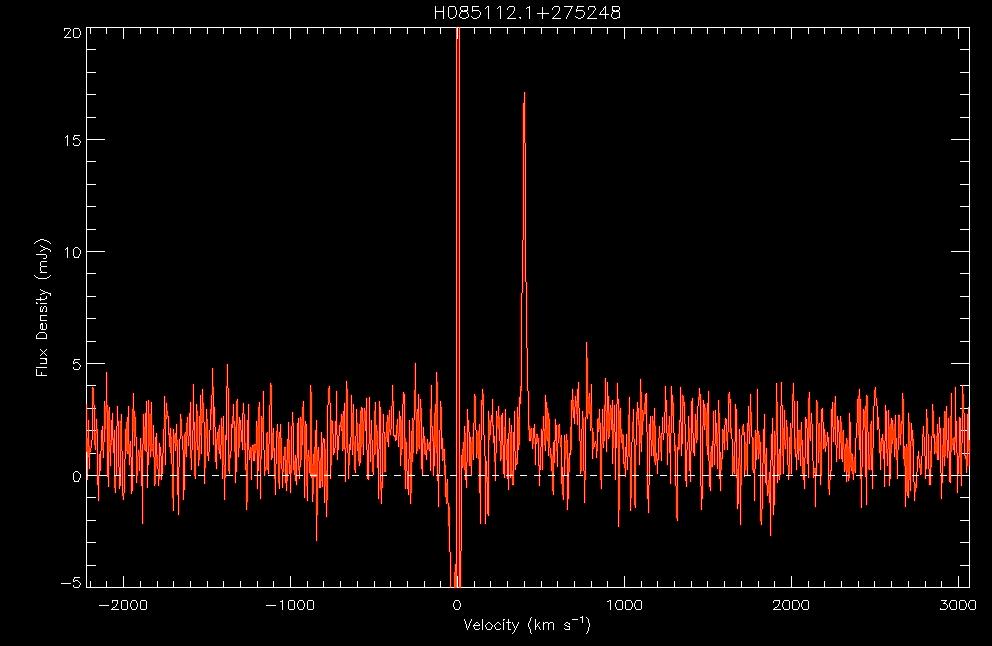 |
DR9Navi
DR14Navi DSS2blu.03 NED1.0 | |
| 222391 | 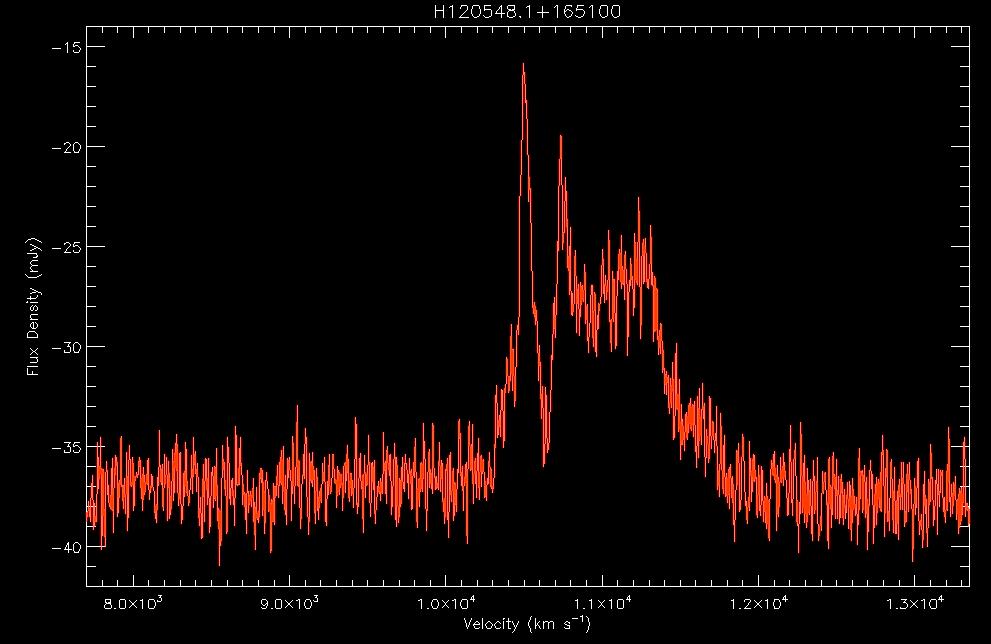 |
DR9Navi
DR14Navi DSS2blu.03 NED1.0 | | |
| C | 322050 | 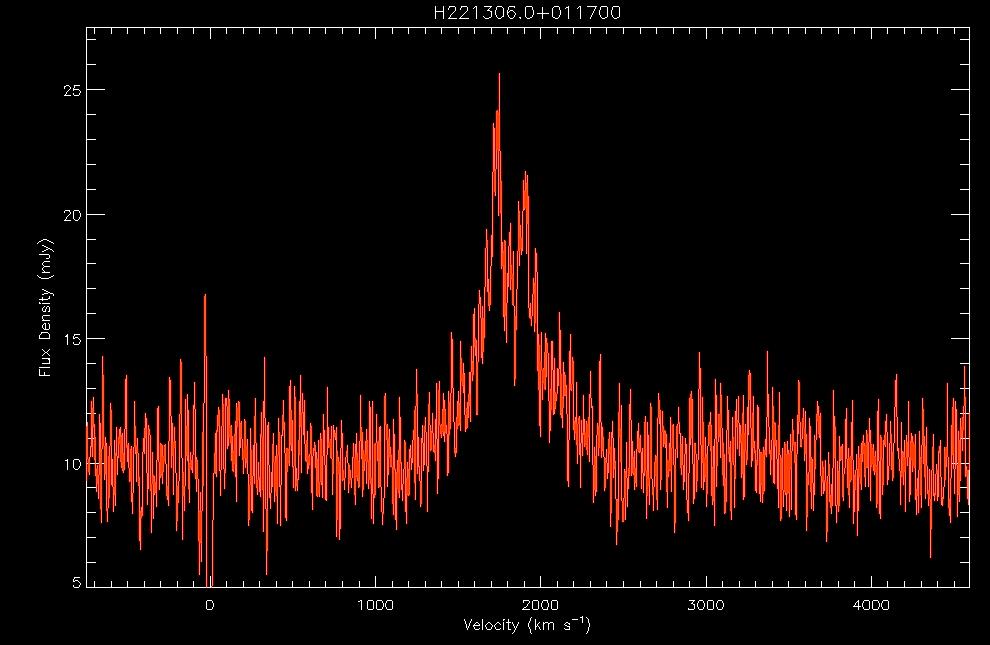 |
DR9Navi
DR14Navi DSS2blu.03 NED1.0 | |
| 732152 | 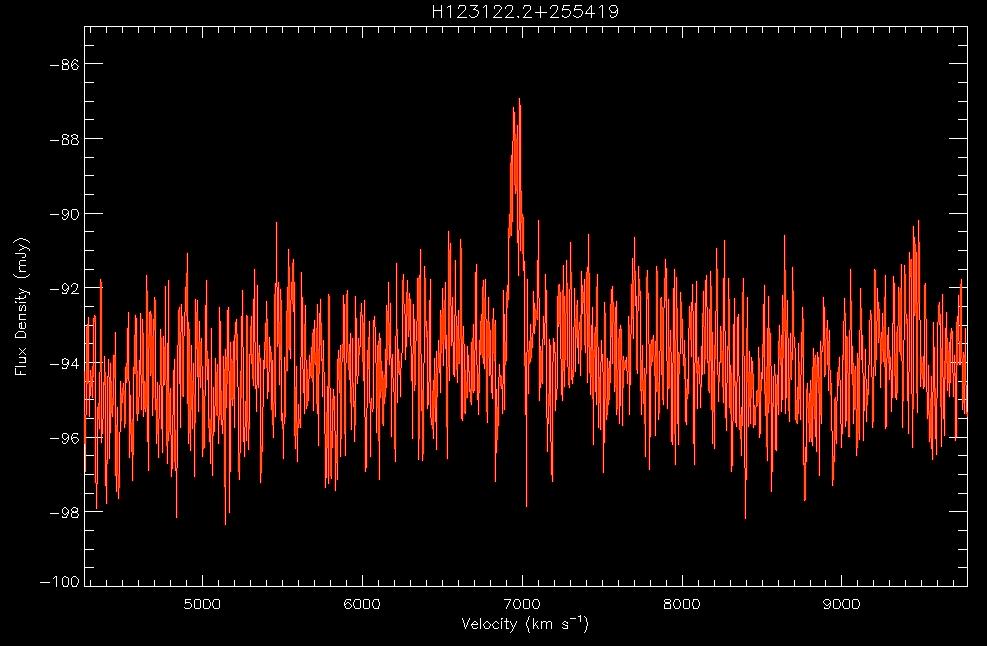 |
DR9Navi
DR14Navi DSS2blu.03 NED1.0 | | |
| D | 208583 | 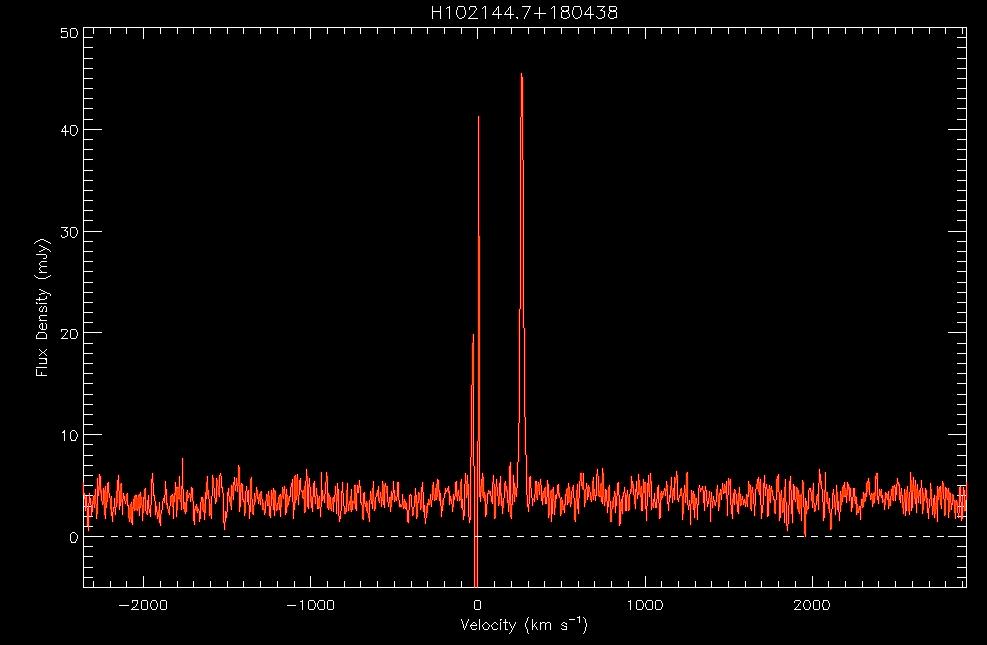 |
DR9Navi
DR14Navi DSS2blu.03 NED1.0 |
|
| 8847 | 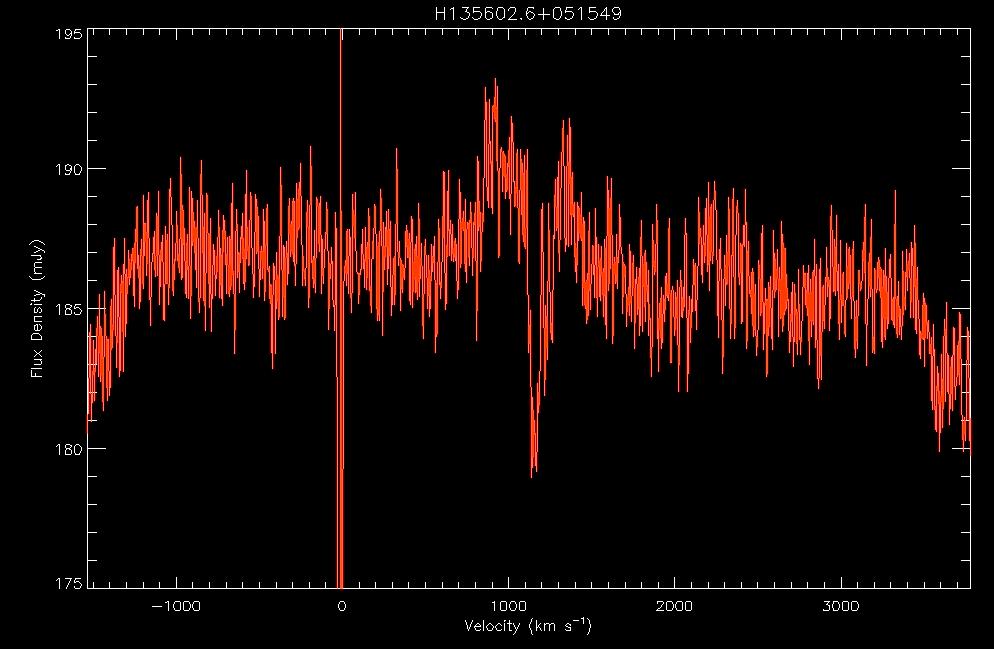 |
DR9Navi
DR14Navi
DSS2blu.03 NED1.0 | | |
| E | 229196 | 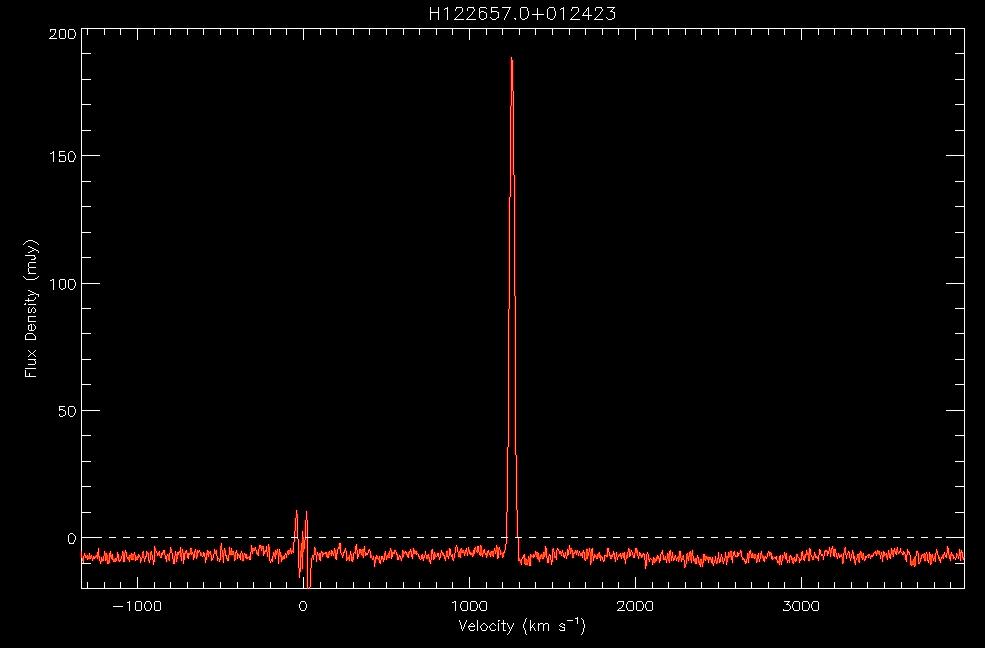 |
DR9Navi
DR14Navi DSS2blu.03 NED1.0 | |
| 193949 | 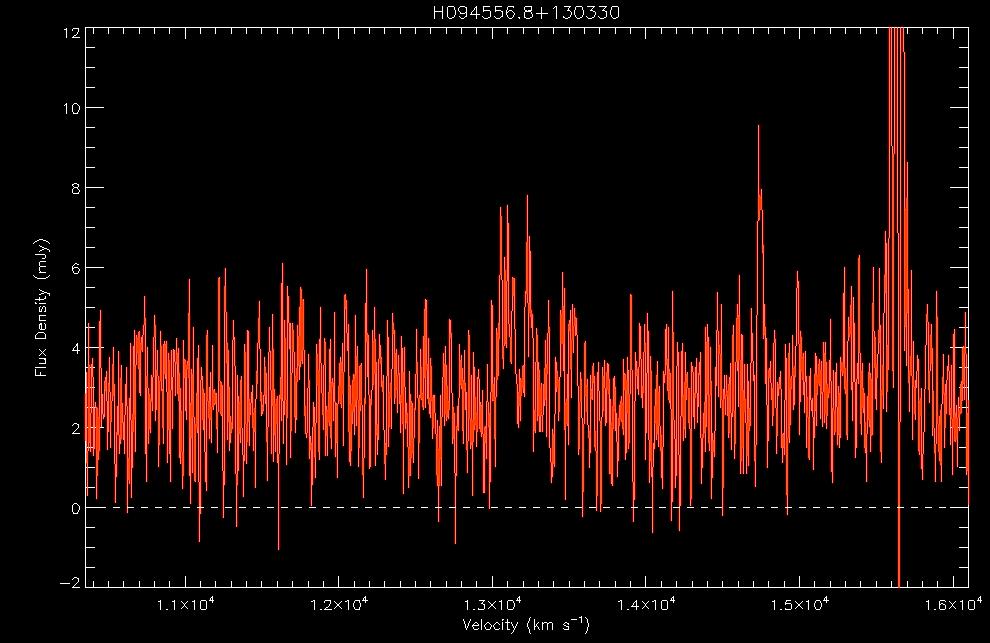
|
DR9Navi
DR14Navi DSS2blu.03 NED1.0 | |
2.4 More (important) questions for the UAT in 2018: a. What former Arecibo atmospheric scientist is the author of the (classic) mystery novel "Murder at Arecibo"? b. What famous radio engineer played hockey at the University of Wisconsin in the 1920's? c. What telescope is named for Cornelius Calvin Sale Jr.? d. In what movie is it noted that the Parkes Telescope "remains a part of NASA missions to this day. And it's still in the middle of a sheep paddock"? e. When awakened from sleep by a superior officer who asked if he was indeed holding a teddy bear, what MASH character replied: "Uh, yes, sir. Regulations against having the real kind".
Last updated Fri Jun 15 11:51:09 EDT 2018 by martha
